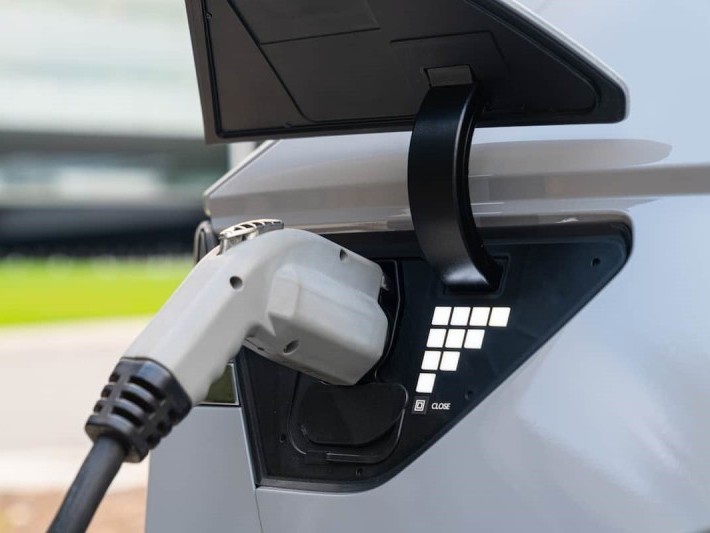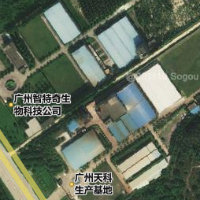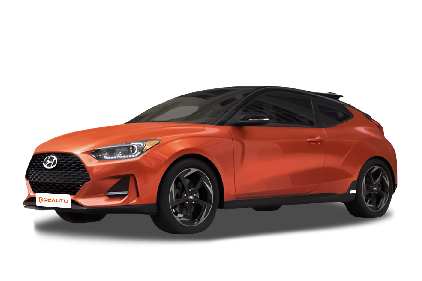Q
Is Veloster a small car?
The Veloster belongs to the compact car category and is generally not regarded as a traditional small car. In terms of car segment classification, it falls into the C-Segment, which means it's a compact car with a body length of 4,250mm, a width of 1,805mm, a height of 1,405mm, and a wheelbase of up to 2,650mm. Compared with typical small cars, such as those with a length of less than 4 meters and a wheelbase of around 2,500mm or even shorter, the Veloster is larger in size. Moreover, the Veloster is usually equipped with a 1.6-liter turbocharged engine with a maximum horsepower of 187PS, and its power output is also stronger than that of many small cars. Its unique 2 + 1 door design and sporty tuning also make it more inclined towards the positioning of a compact sports car. Its overall performance and space performance are between those of small cars and mid - sized cars.
Special Disclaimer: This content is published by users and does not represent the views or position of PCauto.
Related Q&A
Q
Is Hyundai Veloster a race car?
The Hyundai Veloster is not a purpose-built race car, but it does have several performance-oriented elements. Powered by a turbocharged 1.6-liter engine producing 187 horsepower, it can reach a top speed of 214 km/h and accelerate from 0 to 100 km/h in just 8 seconds. The dual-clutch transmission (DCT) and front-wheel-drive layout deliver an engaging driving experience.
Its MacPherson strut front suspension and ventilated disc brakes on both axles enhance handling and braking performance. However, compared to a true race car, it lacks features like a stripped-down interior for weight reduction, a highly tuned racing engine, or a full roll cage.
The Veloster is better described as a sporty road car designed for daily driving, with performance enhancements that appeal to drivers seeking excitement on open roads without the extreme compromises of a dedicated race vehicle.
Q
Is Hyundai Veloster an SUV?
No, Hyundai Veloster is not an SUV, but a Class C compact car. SUV is the abbreviation of Sport Utility Vehicles, which usually has a higher ground clearance, and many SUVs are equipped with a four - wheel drive system to enhance off - road performance. Also, its interior space is generally larger and more spacious, especially in terms of cargo space and passenger space.
Compared with SUVs, the Veloster has a lower body stance. It is 4250 millimeters long, 1805 millimeters wide, and 1405 millimeters high. In addition, it comes standard with front - wheel drive, and its structure meets the characteristics of traditional compact cars. It runs on gasoline, and it is equipped with a 1.6 - liter turbocharged engine. It has 60:40 split - folding rear seats and a 440 - liter trunk, focusing more on providing the typical sporty driving experience of a compact car rather than the versatility and off - road capabilities of an SUV.
Q
Is Hyundai Veloster a sports car?
The Hyundai Veloster can be regarded as a sports car to some extent. It's an entry - level sports car launched by Hyundai, which is equipped with a 1.6 - liter turbocharged engine that can output 187 horsepower. As a compact car, the power is relatively strong. The maximum speed can reach 214 km/h, and the acceleration time from 0 to 100 km/h is 8 seconds.
It has some sporty design features. Its exterior design is unique and eye - catching, which is quite attractive to those who pursue sports aesthetics. In addition, it is equipped with a dual - clutch transmission (DCT), which can achieve quick gear changes and bring a more enjoyable driving experience. The MacPherson independent suspension used both at the front and rear and the ventilated disc brakes improve the handling and braking performance, which are crucial for a sports car.
Inside the car, configurations such as the electrically adjustable driver's seat, the rear seats that can be folded down in a 60:40 ratio, and the single - zone automatic air - conditioning system strike a balance between comfort and sportiness. Considering all these factors, the Hyundai Veloster has the characteristics of a sports car.
Q
Why does Hyundai Veloster only have 3 doors?
The Hyundai Veloster features a unique 2+1 asymmetric three - door layout. There is one door on the driver's side and two doors on the front - passenger side. This design offers two main advantages. On one hand, it facilitates the entry and exit of rear - seat passengers. Usually, rear - seat passengers get in and out from the right side, and the two doors can make it easier for them to access the rear seats. On the other hand, this layout is extremely rare, which enhances the visual impact, making the vehicle's appearance more distinctive and individual, allowing it to stand out among numerous car models.
In addition, the hidden rear - door handle design further enhances the overall smooth lines and the coupe style of the vehicle. It also makes the car look like a two - door sports car from certain angles, combining the stylishness and practicality of a two - door sports car.
Q
What are the advantages of Hyundai Veloster?
The Hyundai Veloster has quite a few advantages. In terms of exterior design, it has graceful lines and unique design elements like the central dual - exhaust, appealing to various consumers.
Regarding the power performance, it is equipped with a 1.6T engine, delivering strong power. The official 0 - 100km/h acceleration time is 8 seconds. When you step hard on the accelerator, the engine speed rises rapidly, and you'll feel a strong sense of push in the back.
The in - car configuration is also quite rich. Standard features include ABS anti - lock braking, electronic stability control, 6 airbags, ISOFIX child seat anchors, rear parking sensors, a parking image system, hill - start assist, a multi - function steering wheel, steering wheel paddle shifters, a 220V/230V power supply, and keyless entry.
In terms of space, it's basically sufficient for people of average figure. The middle part of the rear row is flat without a bulge, and the trunk has a capacity of 440L.
Moreover, the vehicle provides a 5 - year or 300,000 - kilometer warranty, which can relieve the owners of potential worries.
Q
Does Hyundai Veloster have high fuel efficiency?
The official fuel consumption of Hyundai Veloster is 8.1 liters per 100 kilometers. Whether it's fuel-efficient depends on various factors. Compared with some compact cars that have smaller engines and might achieve lower fuel consumption, the Veloster's 8.1 liters per 100 kilometers doesn't seem extremely fuel - saving. However, considering that it belongs to the C - class size and is equipped with a 1.6 - liter turbocharged engine that can output 187 horsepower, this fuel consumption is reasonable.
In addition, the actual fuel consumption can vary significantly depending on driving habits (for example, frequent rapid acceleration or hard braking will increase fuel consumption) and road conditions (such as stop - and - go city traffic or highway driving). For those who want to get a certain amount of power in a C - class car without overly sacrificing fuel economy, the Veloster strikes a balance between performance and fuel consumption.
Q
What's the lifespan of Hyundai Veloster?
There's no fixed standard for the service life of the Veloster, as it's affected by various factors. Under normal use and maintenance, the vehicle could reach a mileage of 600,000 kilometers or be used for 15 years. From the perspective of the vehicle warranty, the Veloster offers a 5 - year or 300,000 - kilometer warranty, which means the vehicle can maintain a good condition at least within this period.
If you carry out regular maintenance on time, have good driving habits, and drive in suitable conditions, the vehicle's lifespan will be longer. On the contrary, improper use and untimely maintenance may lead to various malfunctions and shorten the service life. For instance, long - term aggressive driving and not changing the engine oil on schedule can damage components such as the engine.
However, even if the vehicle has been used for more than 15 years or has exceeded a mileage of 600,000 kilometers, it can still continue to be used as long as it passes strict inspections.
Q
Is the maintenance cost of Veloster high?
The Hyundai Veloster's maintenance expenses fall into the mid-range category in Malaysia, slightly higher than comparable Japanese performance models but not excessively expensive. A basic service (including engine oil, oil filter, and routine inspection) typically costs around RM300–RM450, recommended every 10,000 km or 6 months.
Compared to conventional family cars, the Veloster's turbocharged engine requires higher-quality lubricants and components, resulting in moderately elevated maintenance costs. For example, an air filter replacement ranges between RM120–RM200, while spark plug changes cost approximately RM400–RM600 (depending on OEM or aftermarket parts).
Given the Veloster's unique 1.6T GDi engine configuration, certain proprietary parts may carry a premium over naturally aspirated equivalents. However, owners can moderately reduce expenses by opting for reputable third-party workshops outside authorized service networks.
It's worth noting that the Veloster's relatively limited market presence in Malaysia means some specialized components may require ordering in advance. Thus, using genuine parts is advised to ensure long-term performance reliability.
Overall, while the Veloster's upkeep costs aren't prohibitive, they remain noticeably higher than typical commuter vehicles—a trade-off that aligns with its positioning as a distinctive performance-oriented choice for buyers with flexible budgets seeking a personalized driving experience.
Q
Is Hyundai Veloster a good choice?
Hyundai Veloster has many commendable features and is a great car. It falls under the C-segment category, with a unique exterior that appeals to consumers seeking individuality. In terms of interior space, it measures 4,250 mm in length, 1,805 mm in width, and 1,405 mm in height, with a wheelbase of 2,650 mm. The 4-seat design is well-suited for small families or outings with friends. A 50L fuel tank ensures decent range, while the 440L trunk capacity meets daily storage needs. In performance, it is equipped with a 1.6L turbocharged engine delivering a maximum horsepower of 187 PS, with an official 0-100 km/h acceleration time of 8 seconds and a top speed of 214 km/h, showing robust power. Additionally, it comes with an array of features, including standard safety configurations such as ABS, electronic stability control, and six airbags, as well as comfort and convenience features like a multifunction steering wheel, paddle shifters, and automatic headlights. The vehicle is backed by a 5-year or 300,000 km warranty, ensuring reliable after-sales service. Priced from RM 154,488, it holds competitive appeal within its segment.
Popular Cars
Model Year
Car Compare
Car Photo
Latest Q&A
Q
How much does it cost to buy a 2024 Tesla Model 3?
The 2024 Tesla Model 3 starts at around RM 175,000, but the final price depends on your chosen configuration and add-ons. Opt for the Long Range or Performance version, and you’re looking at a higher tag.
As Tesla’s entry-level model, it packs cutting-edge EV tech, including 500+ km of range on a single charge and standard Autopilot for both daily commutes and road trips. Just keep in mind extra costs like insurance, registration, and potential home charger installation.
Tesla’s Supercharger network is expanding locally, with solid coverage in major cities, making charging hassle-free. Maintenance costs? Typically lower than gas cars—no oil changes, fewer moving parts—so long-term savings add up.
If you’re after more thrills, the Performance variant hits 0-100 km/h in roughly 3 seconds. Plus, government EV tax perks help soften the upfront cost.
Q
How reliable is the 2024 Model 3?
The 2024 Model 3 delivers solid reliability, thanks to Tesla’s continuous software updates and hardware refinements. Key areas like the battery management system and Autopilot have seen multiple optimizations, leading to a noticeable drop in failure rates.
This model features a stiffer body structure and an improved suspension setup, offering a smoother ride. Upgraded interior materials also help reduce cabin rattles—a common gripe with earlier builds.
EV maintenance costs remain low (no oil changes, etc.), though it’s wise to periodically check battery health and charging components for long-term performance. For shoppers eyeing EVs, charging infrastructure and home charging options matter—thankfully, public chargers are expanding fast, making daily use more convenient.
If you frequently road-trip, planning charging stops ahead helps. While the range easily handles daily drives, a little route prep goes a long way in maximizing the experience.
Q
What is the battery range of the Tesla Model 3 2025?
The battery range of Tesla Model 3 2025 is expected to be optimized based on existing models, and specific data needs to be released officially. However, referring to the EPA range of the 2024 rear wheel drive version, which is about 438 kilometers, and the high-performance version, which is about 513 kilometers, the 2025 model may further improve, especially in terms of battery technology or energy efficiency management. For electric vehicles, the range is greatly affected by driving habits, road conditions, and climate. Air conditioning may slightly reduce the range in hot weather, but the battery thermal management system can usually maintain stable performance. In terms of charging, Model 3 supports super fast charging, which can replenish about 250 kilometers of range in about 15 minutes, while home charging stations require 6-8 hours to fully charge. Daily commuting or long-distance travel are practical enough, it is recommended to follow Tesla's official website or local showroom for the latest information.
Q
Is the 2024 Model 3 worth the price?
The 2024 Model 3 strikes an impressive balance between price and performance. Its upgraded range, more refined interior, and enhanced autonomous driving features genuinely boost its competitiveness—especially for tech-savvy, eco-conscious buyers.
Tesla optimized the battery efficiency this time around, making it suitable for both daily commutes and longer trips, while the handling stays true to the brand’s signature responsiveness. If your budget allows and you’re open to EVs, this one’s worth considering—though a test drive is wise to see if it matches your driving style.
That said, local charging access matters. While public chargers are becoming more common, home installation costs should factor into your budget. Alternatives in this price range exist, so cross-shop specs and service policies (like warranty coverage or charging network support) to make a well-rounded decision.
Q
How many miles does a 2024 Tesla Model 3 get?
The 2024 Tesla Model 3 offers varying range figures depending on configuration. The rear-wheel-drive (RWD) version delivers an EPA-estimated 272 miles (approx. 438 km), while the all-wheel-drive Long Range model pushes that to around 341 miles (roughly 549 km). Real-world range may vary slightly based on driving style, road conditions, and climate.
As a pure EV, the Model 3 achieves this efficiency thanks to its advanced battery management system and lightweight design. It also supports fast charging—at a Tesla Supercharger, you can add up to 200 km of range in about 15 minutes. Whether for daily commutes or longer trips, that’s more than enough for most drivers, especially with charging infrastructure becoming more widespread.
If you need to maximize range, tweaking your driving mode or using the car’s built-in energy optimization features can help squeeze out even more miles.
View MoreRelated News

2026 Toyota HiLux receives five-star ANCAP safety rating in ANCAP
MichaelDec 12, 2025

In Malaysia, which sliding door MPVs are available?
MichaelOct 30, 2025

Modern Ioniq 5 N Lands in Malaysia: Track-Level Performance Electric Vehicle is Here, Priced Possibly Below RM 400,000?
JohnSep 10, 2025

Hyundai's Big Return to Malaysia: Top 5 Models Expected
MichaelMay 30, 2025

580,000 km & 87.7% Battery Health: Ioniq 5’s Incredible Durability
MichaelMay 6, 2025
View More

















Pros
Cons